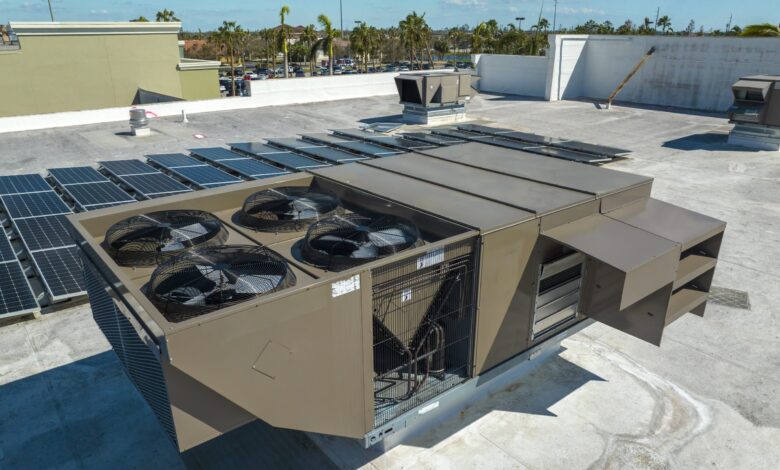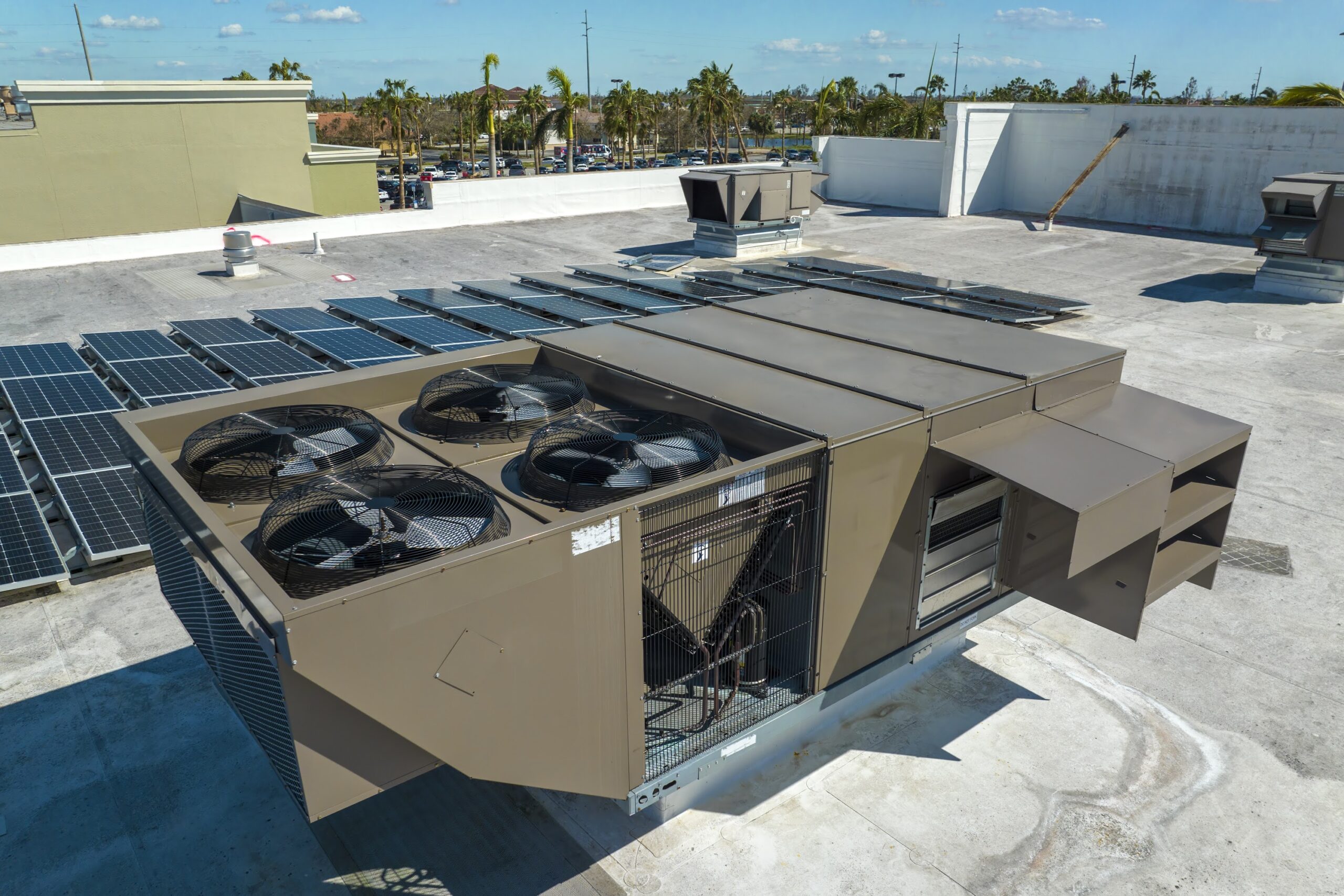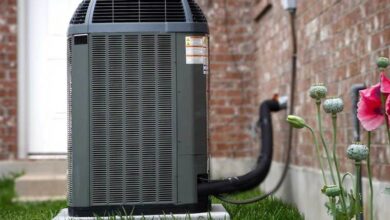How to Select a Commercial HVAC System


Selecting an HVAC system for a commercial building is an important process for a building owner or facility manager. The system that you select will make a difference when it comes to your operational costs, occupant comfort, maintenance demands, and long-term return on investment (ROI).
Assess Your Building’s HVAC Needs
Determine Load Requirements & Building Usage
Each building has its own heating and cooling demands. When considering how much your system needs to run each day, consider the square footage and ceiling height of the building. An office building will have different ventilation and comfort needs than a restaurant, retail, or industrial space.
Climate also plays a major role in decision-making. Buildings in San Marcos require systems designed to manage high cooling demands throughout much of the year. A load calculation performed by a member of our team helps to ensure that your system is not oversized (wasting energy) or undersized (struggling to maintain comfort).
Identify the Existing System and Its Limitations
Before selecting a new system, consider the system’s age and level of efficiency. You may be able to identify performance issues by reviewing past energy bills. A steady increase in energy consumption can signal an aging HVAC system. Evaluating the weaknesses within your system will help guide your decision toward an efficient upgrade that meets current and long-term needs.
Compare HVAC System Types for Commercial Use
Packaged Roof-Top Units & Split Systems
Packaged roof-top units (RTUs) save space and provide easy access for maintenance. This type of system combines heating and cooling components into one outdoor unit. Split systems separate indoor air handlers and outdoor condensers, offering flexibility for buildings with limited roof space or special zoning needs.
Variable Refrigerant Flow (VRF) & Heat Recovery Systems
VRF systems offer the latest in commercial efficiency and flexibility. They use advanced inverter-driven compressors and refrigerant control to provide heating and cooling to multiple zones simultaneously. Heat recovery VRF systems can even transfer heat between spaces, allowing one space to cool while another heats.
Chillers, Boilers & Air-Handler Systems
For large commercial facilities, customized central systems using chillers, boilers, and air handlers are an ideal option. Chillers can create chilled water for cooling off a space, while boilers will supply hot water and steam for heating. Air handlers will then be able to distribute the conditioned air throughout the building.
Key Selection Criteria
Energy Efficiency & Lifecycle Cost
Lifecycle costs give you a picture of long-term value. High-efficiency systems tend to cost more in the beginning. However, they also save you money throughout the year. When considering upgrading, take into account options and features that will make your system more efficient.
Maintenance & Serviceability
Choose a system with easy access so that regular maintenance is straightforward. Readily available parts mean that you will experience easier maintenance sessions and shorter downtimes. Service contracts with local support can allow affordable and quick service.
Control Systems & Zoning
Modern building automation and zoning control systems can enhance comfort and reduce waste. Zoning a building will allow you to adjust temperature settings for different areas based on occupancy. Smart controls monitor the system’s overall performance and help to detect inefficiencies early.
Code Compliance & Environmental Regulations
Your heating and cooling system must comply with local building codes and energy efficiency standards. If your building is looking to achieve other sustainability goals, make sure that your top considerations meet green building requirements and use low-GWP refrigerants. Considering LEED ratings can help reduce environmental impact and operating costs when selecting an HVAC system.
Partnering With a Qualified Commercial HVAC Contractor
Expertise Matters
Proper design and sizing require professional evaluation. At SM Air, we make sure that your system meets your building’s demands while adhering to safety standards. Regarding installation and maintenance, it’s important that a knowledgeable professional ensures long-term system efficiency, safety, and reliability.
Tailored Solutions
Our team will assess your facility’s structure and load needs to come up with a unique system that fits your needs rather than a generic solution. A custom design will provide you with better efficiency and comfort compared to a one-size-fits-all approach.
Support & Preventive Maintenance Plans
Our team offers ongoing service agreements to make sure that key components are regularly inspected and cleaned to keep your system performing at peak efficiency. This will also help to prevent costly breakdowns and downtime.
Ready to Choose the Right HVAC System for Your Building?
At SM AIR, our team will help you look at all your options and select the right system for your comfort and operational needs. We can perform an expert installation, ensuring safety and reliability for many years. Contact us today to schedule a consultation.
Frequently Asked Questions
How soon should we start planning HVAC replacement for a commercial building?
It’s best to begin planning at least 6 to 12 months before your current system reaches the end of its expected lifespan (which is usually 15 to 20 years).
What size HVAC system does my building need?
Sizing depends on your building’s load calculation. This calculation takes square footage, occupancy, insulation, and climate into consideration. A professional assessment will make sure that your system is correctly sized for efficiency and comfort.
Are VRF systems better than traditional HVAC for office buildings?
Yes, VRF systems offer greater energy efficiency and more precise zoning control options. They also have quieter operation, making them ideal for most office buildings.
How does preventive maintenance affect HVAC system performance and costs?
Regular maintenance of your system will reduce energy waste and prevent breakdowns. This can lower your total cost of ownership as well.



